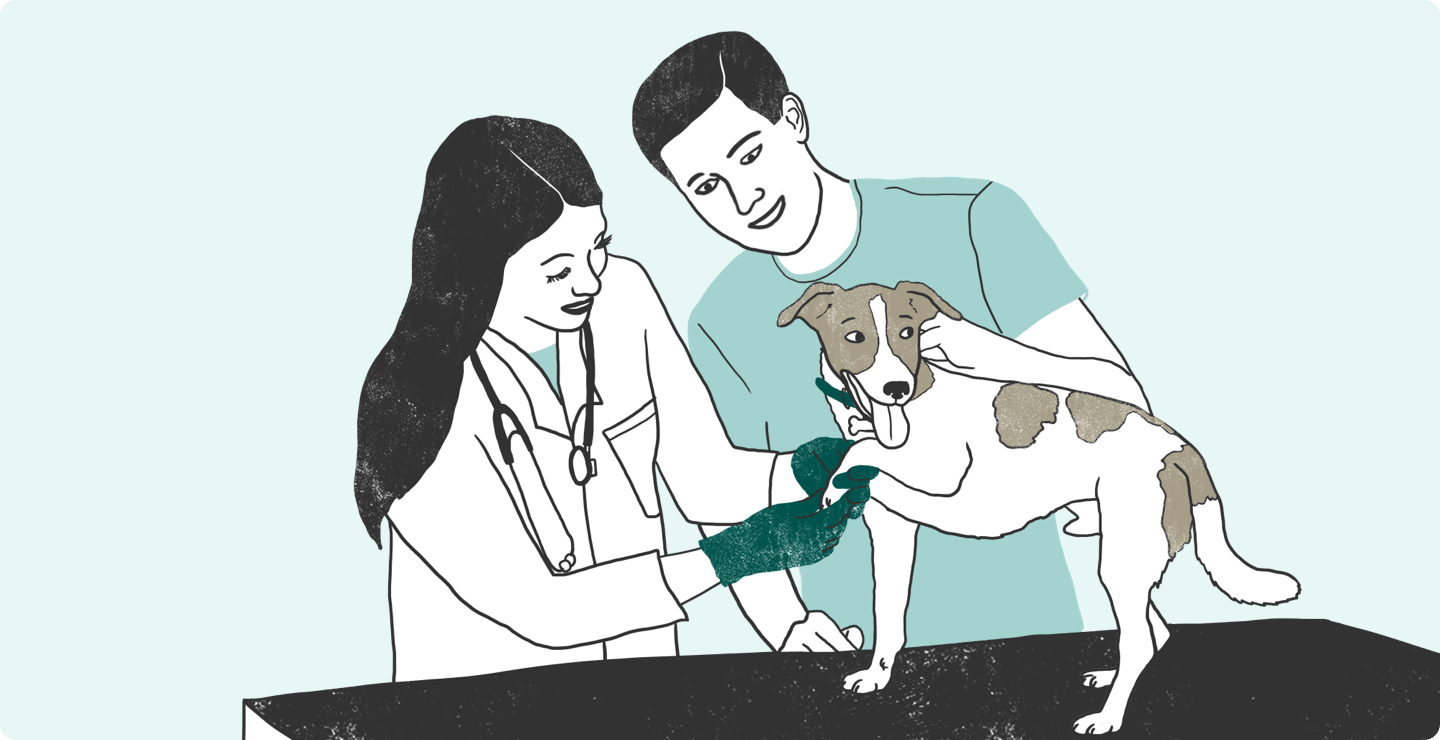Sometimes when your dog speaks, you know just what they’re saying. “I’m hungry.” “I wanna go outside!” “The cat stole my bed again.” Yet it may be harder to tell if your dog is in pain.
The most common chronic pain seen in dogs is osteoarthritis (OA). When in the comfort of your home, you’re in the best position to recognize what your dog is telling you about her OA pain. Your dog is more at ease at home, making it easier to notice if they’re acting differently. If you notice signals of pain, make an appointment with your veterinarian. Along with their help, you can potentially slow OA’s progression and ease your pup’s discomfort.

How to Tell If Your Dog Is in Pain
Your dog’s pain language is a language of signs that they share with you.
Some signs of pain in dogs can be physical, such as:
- Limping
- Hesitation to jump
- Slow to rise
- Lagging behind on walks.
Other signs can be emotional, like changes in your dog’s:
- Happiness
- Energy levels
- Excitement
In fact, in a recent study1, these signs were used to help assess how much OA pain the dog was feeling.
In that study, pet owners were given a short questionnaire that asked about their dog’s at-home behavior. Pet owners recorded changes in their dog’s levels of emotional well-being (happiness, calmness, contentedness, comfort) and physical well-being (energy, enthusiasm, activity, and relaxation). Changes in these behaviors helped both the pet owner and their veterinarian identify and understand what the dogs were saying about their pain. Use this OA quiz to help identify the signs a dog is in pain.

Talk to Your Veterinarian
If you suspect that your dog is telling you they might have OA, it’s important to make an appointment with your veterinarian for an OA screening. If it’s determined that your dog has OA, your veterinarian may recommend a comprehensive treatment plan. Fortunately, there are treatment options that can safely help ease the pain of OA. In the study discussed above, the long-term treatment option used was a nonsteroidal anti-inflammatory drug (NSAID), which has been found to be safe for long-term use.
The sooner osteoarthritis is diagnosed, the better your dog’s outlook and quality of life can be and that should come as a clear sign of happiness.
RIM-00251R2
IMPORTANT SAFETY INFORMATION: Librela is for use in dogs only. Women who are pregnant, trying to conceive or breastfeeding should take extreme care to avoid self-injection. Hypersensitivity reactions, including anaphylaxis, could potentially occur with self-injection. Librela should not be used in breeding, pregnant, or lactating dogs. Librela should not be administered to dogs with known hypersensitivity to bedinvetmab. Adverse events reported post-approval include ataxia (lack of balance/coordination), anorexia (loss of appetite), lethargy (tiredness), emesis (vomiting), and polydipsia (increased drinking). The most common adverse events reported in a clinical study were urinary tract infections, bacterial skin infections and dermatitis (skin irritation/inflammation). See full Prescribing Information.
See the Client Information Sheet for more information about Librela.
- Reid J, Wright A, Gober M, Nolan, A.M, et al. (2018). Measuring chronic pain in osteoarthritic dogs treated long-term with carprofen, through its impact on health-related quality of life (HRQL). Vet Comp Orthop Traumato. 31(S 01): A1-A6.




